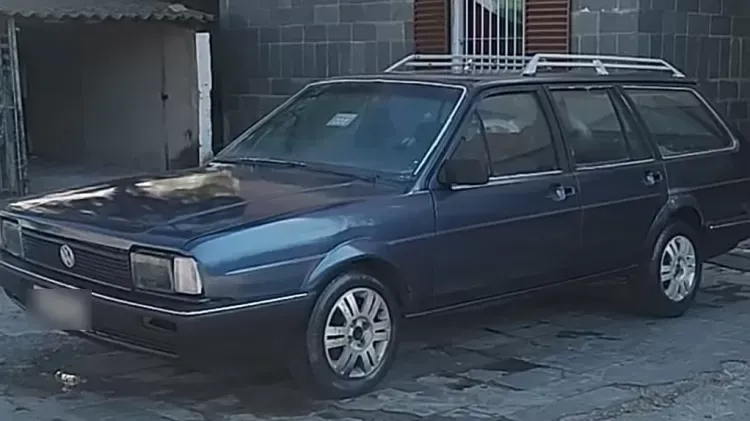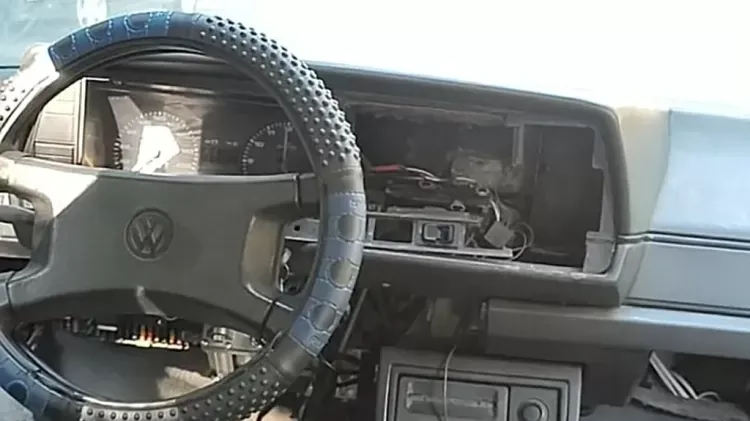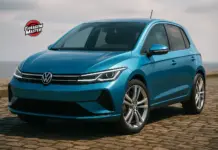At a time when technological innovation has been associated with large investments and projects by billion-dollar companies, a 25-year-old Brazilian stood out by showing that it is possible to create something of impact with a creative vision and a tight budget. Mateus Rodrigues Reis, an industrial automation technician from Belo Horizonte, managed to transform a Volkswagen Santana Quantum 1989 CL 2.0 in a autonomous car, or rather, in a homemade version of the famous system Autopilot from Tesla, with only R$ 900 of investment.
This project not only attracted attention for its creativity, but also for its proposal to democratize autonomous driving technology, proving that it is possible to do a lot with a little, by using recycled parts and easily accessible components. In this article, you will learn all the details of this incredible transformation that went viral on social media and generated worldwide repercussion.
The Origin of the Project: A Joke That Became Reality

The idea of transforming the 1989 Santana Quantum into an autonomous vehicle came about as a personal challenge for Mateus Reis. As he himself says, the project began as a joke and a way to apply his knowledge in industrial automation. The Santana, which belonged to his father, was chosen for the transformation.
“I've always liked technology and I wanted to do something different with the Santana. The idea of turning it into a kind of homemade 'Tesla' came about as a joke, but I soon realized that it was possible to make it a reality”, explains Mateus, showing that, with will and creativity, any project, no matter how bold it may seem, can come to life.
The initial proposal was simple: how to adapt an old car so that it would be able to drive itself, using accessible technologies, without the need for large financial investments. The idea soon turned into a more ambitious project, and Mateus began working alongside his partner, with the aim of creating something innovative.
The Technology Behind the Self-Driving Car

With in-depth knowledge in industrial automation, Mateus and his partner began developing the project with what they had at hand. They used recycled materials and simple but effective electronic components to make the car work autonomously. The result was a project that impresses not only for its creativity, but also for its efficiency of resources.
The first step was to adapt the steering wheel and pedals so that they could be controlled electronically. To do this, Mateus used a Arduino microcontroller, which is a small device capable of controlling and automating various functions. With it, it was possible to connect the steering wheel and pedals to the car's electronic system, allowing the vehicle to be driven without the need for human intervention.
Another essential component was the computer vision system, which allowed the Santana to “see” the road and identify obstacles. This is possible through cameras that capture images around the car, and software that processes this information to make driving decisions, such as avoiding obstacles or following a correct trajectory.
In addition, the car's multimedia center was adapted with a tablet and an application developed by Mateus to control the vehicle by voice commands. This application allows the driver to interact with the system intuitively, while the car automatically adjusts to follow the desired direction.
Challenges and Advances in the Project

Of course, like every innovative project, the path was not easy. The Santana Quantum is a car of 35 years old, and had already been stopped for seven years, which brought many challenges in adapting the systems. In its first attempt, in August 2024, the car was able to leave the garage and drive on low speed, using only the first gear. This already represented a great advance, but the automation process is still far from being finalized.
The challenges didn't stop there. Mateus and his partner faced several technical and mechanical problems along the way. The main obstacle was adapting the manual transmission, a task that is still under development. However, the team of inventors is optimistic and is already planning the next steps.
“Our next goal is to automate the exchange and add more parking sensors It is rear view camera“, explains Mateus. This will make the project even closer to a truly autonomous system, bringing new functions and increasing security and the efficiency of the car.
The Impact on Social Media and Project Success
What seemed like a simple project by a technology enthusiast has become a phenomenon on social networks. The video of the Santana Quantum running autonomously went viral on the profile @jrindustrias, on Instagram, reaching more than 480 thousand views. This generated a wave of interest from other enthusiasts. technology It's from motorsport, many of whom were impressed by the simplicity of the design and the low cost involved.
The impact was so great that Mateus began receiving messages from people all over Brazil and even from other countries, congratulating him on his achievement and asking how they could do the same. This positive feedback was essential for the project to gain new proportions.
“I received many messages from people congratulating me and asking me how to do the same. This motivated me to move forward and think of ways to make this technology accessible to more people,” says Mateus, visibly excited about his success.
The Future of Design: Making Any Car Autonomous
With the success achieved, the next step for Mateus and his partner will be develop an adaptive kit that allows any car to be transformed into an autonomous vehicle, in an accessible and simple way. The goal is to allow enthusiasts of automotive technology throughout Brazil can adapt their own cars, without having to resort to large investments or the acquisition of already autonomous vehicles from brands such as Tesla.
“We believe that this technology has great potential and can revolutionize the way we move around. The Brazilian Tesla is an example of how, with creativity It is willpower, we can do a lot with a little”, says Mateus.
This project is not only a personal achievement for Mateus, but also a inspiration for all those who believe that it is possible to innovate even without large resources. The story of the autonomous Santana Quantum is a clear example of how, with knowledge, creativity It is determination, it is possible to do magic with what is available.
Conclusion: The Future of Automotive Technology in Brazil
Mateus Rodrigues Reis' project is an example of how Brazil can be a technological innovation center, even with limited resources. With just R$ 900, he showed the world that the autonomous vehicle technology does not have to be exclusive to giants like Tesla or large car manufacturers. Anyone with a passion for technology and the willingness to learn can turn a simple project into something big.
If you, like Matthew, have a innovative idea and want to transform a old vehicle or any other machine in a standalone project, remember that it is possible to do this with creativity, dedication and, of course, with the resources at your fingertips. The Santana Quantum 1989 is not just a car: it is a symbol of how innovation can come from anywhere, and as the technology is within everyone's reach, regardless of the size of their budget.
If you are curious to follow the evolution of this project or even try to adapt your own car, follow Mateus and his partner on the page @jrindustries on Instagram and stay up to date with the latest news. Who knows, maybe the next Tesla Brazilian don't be a project made by you!









